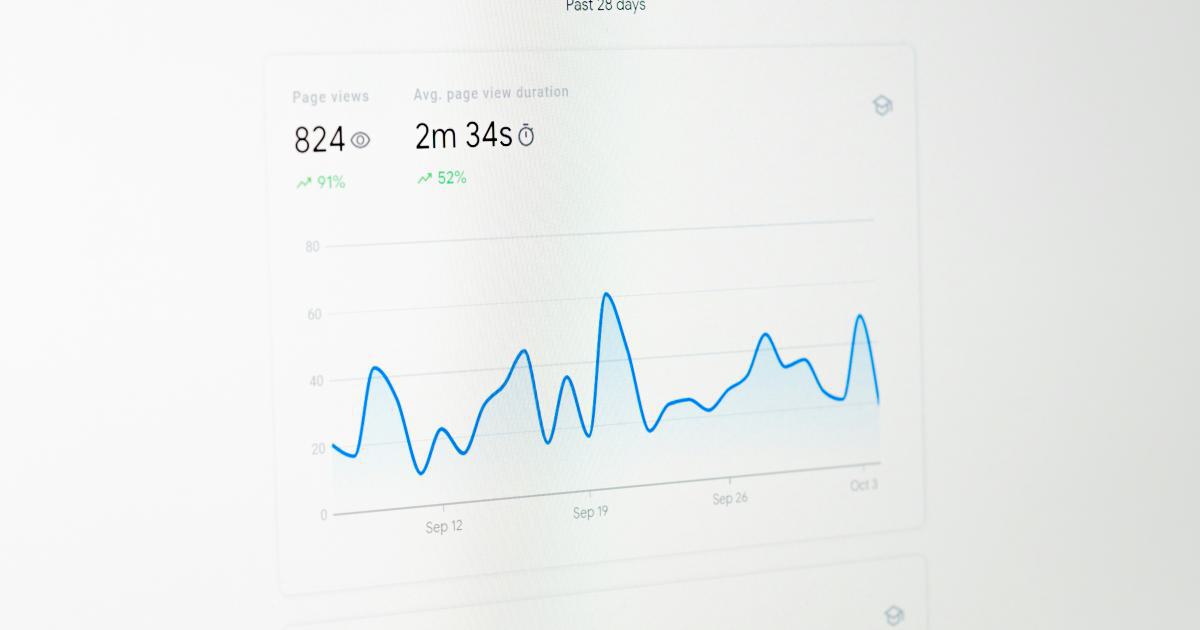Understanding Google Analytics Behavior Flow Report Visualizations


As a vital tool in the digital marketing landscape, Google Analytics offers a wealth of insights into user behavior and website performance. One particularly insightful report is the Behavior Flow, which provides a visual representation of how users navigate through your website. By understanding the intricacies of this report, you can gain valuable insights to optimize your website's structure, content, and user experience.
Exploring the Behavior Flow Report
The Behavior Flow report in Google Analytics is designed to give you a clear picture of the paths users take as they navigate through your website. This report can be found under the "Behavior" section of the Google Analytics dashboard.

The Behavior Flow report presents a visual flow diagram that illustrates the sequence of pages or interactions users engage with on your website. This information can be instrumental in identifying areas of your website that are working well, as well as potential bottlenecks or points of friction that may be hindering user engagement and conversion.
Understanding the Visual Elements
The Behavior Flow report utilizes a variety of visual elements to convey information about user navigation patterns. Let's explore the key components of this report:
Nodes
The nodes in the Behavior Flow report represent the individual pages or interactions on your website. The size of each node corresponds to the number of users who visited that particular page or interaction.

Connections
The connections, or arrows, between the nodes represent the flow of users as they navigate through your website. The thickness of the connections indicates the volume of users moving between the corresponding pages or interactions.

Interaction Points
In addition to page-level interactions, the Behavior Flow report also captures other types of user interactions, such as events, goals, or ecommerce transactions. These are represented as specialized nodes within the flow diagram.

Exits
Exits, or the points at which users leave your website, are indicated by nodes with an outward-facing arrow. These can help you identify pages or interactions that may be causing users to abandon your website.

Customizing the Report
The Behavior Flow report offers various customization options to help you better understand and analyze your website's user navigation patterns. Some of the key customizations include:
- Segment Selection: You can filter the report to focus on specific user segments, such as new vs. returning visitors, desktop vs. mobile users, or users from different traffic sources.
- Time Range: Adjusting the time range allows you to analyze user behavior over different periods, enabling you to identify any trends or changes in navigation patterns.
- Conversion Tracking: By setting up goals or ecommerce tracking in Google Analytics, you can visualize the paths users take leading up to a conversion event, providing valuable insights for optimization.
- Metric Adjustments: The report can be customized to display different metrics, such as pageviews, unique pageviews, or conversion rates, to suit your specific analysis needs.

Interpreting the Behavior Flow Report
Now that we've explored the visual elements and customization options, let's dive into interpreting the insights provided by the Behavior Flow report.
Identifying User Flows
One of the primary benefits of the Behavior Flow report is its ability to highlight the most common user navigation paths on your website. By analyzing the thickness and directionality of the connections between nodes, you can identify the popular entry points, the most frequently visited pages, and the common routes users take to reach their desired destinations.

This information can be invaluable in understanding your website's information architecture, content organization, and user decision-making processes. It can help you identify opportunities to improve the user experience by optimizing the flow of traffic and guiding users more effectively through your website.
Detecting Potential Bottlenecks
The Behavior Flow report can also shed light on areas of your website that may be causing user frustration or abandonment. By closely examining the nodes and connections, you can identify pages or interactions that experience significant user drop-off or unexpected navigation paths.

These potential bottlenecks could be caused by various factors, such as confusing navigation, irrelevant content, technical issues, or a lack of clear call-to-action. By addressing these pain points, you can enhance the user experience and potentially increase engagement, conversions, and overall website performance.
Analyzing Conversion Funnels
When you have established conversion goals or ecommerce tracking in Google Analytics, the Behavior Flow report can provide valuable insights into your website's conversion funnels. By identifying the key pages or interactions that users traverse before reaching a conversion event, you can gain a deeper understanding of the user journey and optimize each step to improve conversion rates.

This analysis can help you identify potential friction points, drop-off areas, or opportunities to streamline the conversion process. By addressing these issues, you can enhance the overall user experience and increase the likelihood of users completing their desired actions on your website.
Leveraging Behavior Flow Insights
Now that you have a solid understanding of the Behavior Flow report and its interpretations, let's explore how you can leverage these insights to drive tangible improvements to your website and marketing strategies.
Optimizing Website Structure and Navigation
The Behavior Flow report can inform decisions about your website's information architecture and navigation structure. By identifying the most common user flows, you can optimize the placement and prominence of key pages, streamline the navigation menu, and ensure users can easily find the content and functionality they're seeking.

Additionally, you can use the report to uncover opportunities to add relevant internal links, call-to-action buttons, or alternative navigation paths to guide users more effectively through your website.
Enhancing Content Relevance and Engagement
The Behavior Flow report can also help you understand which content resonates most with your audience. By analyzing the user flows and interaction points, you can identify the pages or content sections that capture user attention and encourage deeper engagement.

Armed with these insights, you can focus on creating more of the content that your users find valuable, while also addressing any areas where users may be losing interest or abandoning your website.
Optimizing Conversion Funnels
For websites with established conversion goals or ecommerce tracking, the Behavior Flow report can be a powerful tool for optimizing your conversion funnels. By identifying the key steps in the user journey leading to a conversion, you can make targeted improvements to each stage, such as:
- Enhancing call-to-action clarity and positioning
- Improving form design and user experience
- Streamlining the checkout or lead generation process
- Providing additional supporting content or resources

By continuously refining your conversion funnels based on Behavior Flow insights, you can increase the likelihood of users completing their desired actions and boost your overall conversion rates.
Informing Marketing Strategies
The Behavior Flow report can also inform your broader marketing strategies. By understanding the user navigation patterns, you can make more informed decisions about:
- Content distribution and promotion
- Targeted advertising and retargeting campaigns
- Search engine optimization (SEO) efforts
- Email marketing campaign structure and messaging

For example, if the Behavior Flow report reveals that users often enter your website through a specific blog post or landing page, you can focus your content promotion and advertising efforts on driving more traffic to that entry point.
Conclusion
The Behavior Flow report in Google Analytics is a powerful tool that provides valuable insights into user navigation patterns and website performance. By understanding the visual elements, customization options, and interpretation techniques, you can leverage these insights to optimize your website's structure, content, and conversion funnels, ultimately enhancing the overall user experience and driving tangible business results.
Remember, the Behavior Flow report is just one of the many analytical tools available in Google Analytics. By combining these insights with other reports and data sources, you can gain a comprehensive understanding of your website's performance and make informed decisions to continually improve your digital marketing strategies.